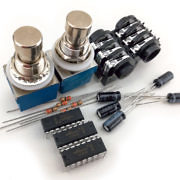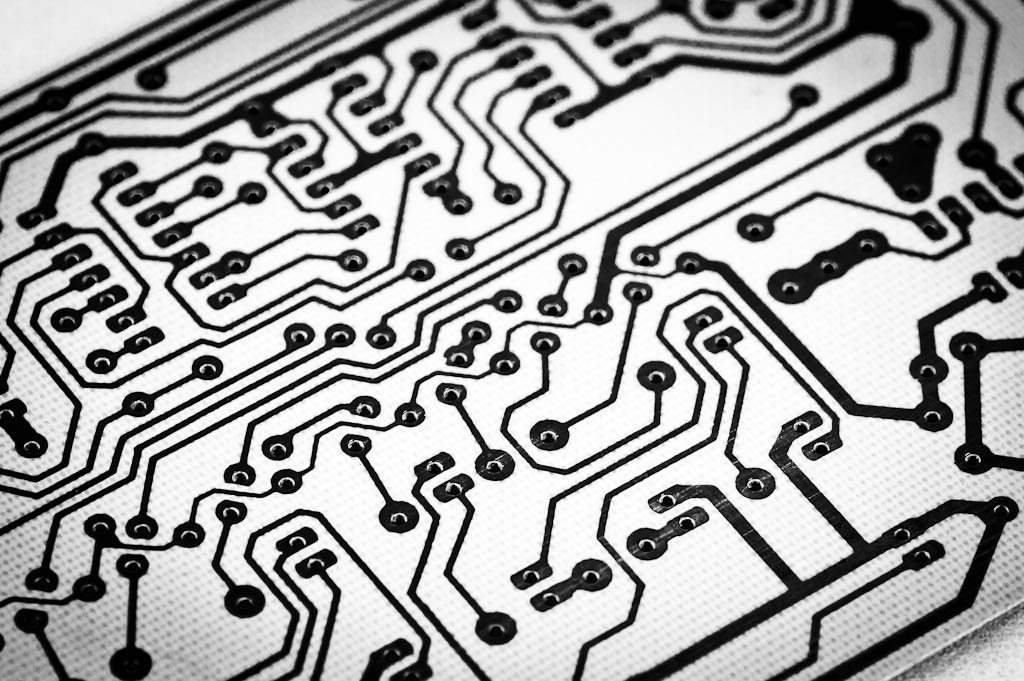Over the years we’ve received emails from folks wanting a deeper explanation of how their pedals work. Some want an overview. Others want to get to the details and and nuances. As much as I enjoy the topic, I don’t always have the time. So you’ll be seeing more posts from us with explanations and answers to common questions.
Electricity.
Strum your guitar, and the strings excite an electrical response through your pickups creating a voltage signal. It all comes down to electricity. If you get down to the deepest levels of electronics most of it comes down to Ohms law, I=V/R. Just like E=MC² it’s a very simple equation but the consequences can be complicated.
 It’s one thing to go from understanding a conductor (wire) to a resistor, and then to a simple RC filter (resistor capacitor filter.) Once you get to op-amps and other integrated circuits the ideas get more abstract. Calculating all the underlying details becomes a lot less important. Often there are simple rules to follow. For example an inverting op-amp’s gain is set by two resistors, but even the simplest op-amp consists of roughly twenty transistors. You could easily fill up a page with formulas showing how it all works together, but this obscures the idea that two resistors set the gain of a very simple circuit.
It’s one thing to go from understanding a conductor (wire) to a resistor, and then to a simple RC filter (resistor capacitor filter.) Once you get to op-amps and other integrated circuits the ideas get more abstract. Calculating all the underlying details becomes a lot less important. Often there are simple rules to follow. For example an inverting op-amp’s gain is set by two resistors, but even the simplest op-amp consists of roughly twenty transistors. You could easily fill up a page with formulas showing how it all works together, but this obscures the idea that two resistors set the gain of a very simple circuit.
Extrapolate the levels of abstraction to a stompbox, a toaster or even a computer. You might use a toaster and never care how it works, so long as it doesn’t light your toast on fire. A computer programmer may have no idea how the actual electronics work. An encyclopedia volume might be filled with the deepest exploration of how an old 8 bit computer worked. If every programmer needed to understand deep level functionality we’d still be playing Pong on old CRT televisions.
It’s like… cats… right?

Why is there not a more even distribution of cats throughout the universe? Why do cats own the internet? Do cats possess all the knowlege of the cosmos, but just wont tell us?
The phenomenon of electricity is really an imbalance of electrons between one place and another. This imbalance doesn’t want to exist. Electrons hate each other and repel like territorial tomcats. Electricity is on a perpetual suicide mission to even out the potential. It is always looking for balance. Balance never happens. This does beg the question though: Why is there not a more even distribution of cats throughout the universe? Science needs to give us answers!!!
It’s actually amazing that we humans have figured out how to harness electricity. We “trick it” into doing useful things while on its quest for self destruction.
If you really want to understand what all these pedal components do, Ohms law is essential, but context is important too. Breaking down circuits into subcircuit sections is helpful. Transistors are used in a multitude of ways, but there are only a few common transistor subcircuits in overdrive pedals. If you keep looking and learning you’ll begin to recognize common op-amp circuits, filter topologies, oscillators and find a limited number of tone control styles built into many different pedals.
If you want to dive right in Electrosmash has a number of effect circuits broken down into subsections. There are deep explanations with very good without going down the rabbit hole of minutia. Check out their analysis and circuit breakdown of the ProCo Rat.
Check back soon and we’ll have more. If there are any topics you’d like us to cover please let me know.
